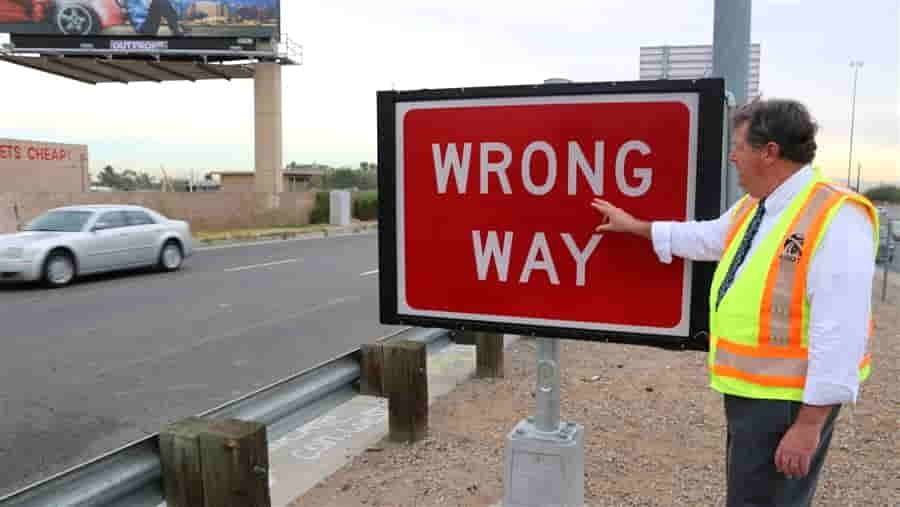Wrong-way driving is one of the most dangerous and often fatal traffic issues. When drivers unintentionally or deliberately enter a roadway in the wrong direction, the consequences can be catastrophic, particularly on highways and high-speed roads. As road safety becomes a global priority, advanced technologies are stepping in to mitigate this hazard. Wrong-way driving detection systems are at the forefront of these innovations, using cutting-edge tools to prevent accidents and save lives.
This article explores how wrong-way driving detection systems work, their benefits, and their critical role in enhancing road safety.
Understanding Wrong-Way Driving and Its Risks
Wrong-way driving typically occurs when a vehicle enters a road, ramp, or highway traveling against the flow of traffic. This is especially hazardous because it creates high-speed, head-on collisions. Common causes of wrong-way driving include:
- Driver confusion or unfamiliarity with road layouts.
- Impairment due to alcohol, drugs, or fatigue.
- Poor visibility or inadequate signage, particularly at night or during bad weather.
The Alarming Statistics
Wrong-way driving incidents, while relatively rare, account for a disproportionate number of fatal accidents. Studies show that:
- Nearly 60% of wrong-way crashes involve alcohol-impaired drivers.
- Head-on collisions from wrong-way driving have a significantly higher fatality rate than other types of crashes.
How Wrong-Way Driving Detection Systems Work
Wrong-way driving detection systems use a combination of advanced technologies to identify and respond to vehicles traveling in the wrong direction. These systems are installed at key entry points, such as highway ramps and intersections, and are designed to detect wrong-way drivers in real time.
1. Cameras and Sensors
High-resolution cameras and radar sensors are strategically placed to monitor traffic flow. These devices identify vehicles entering a roadway in the wrong direction and instantly send alerts to authorities and traffic management systems.
2. Thermal Imaging
In low-light or adverse weather conditions, thermal cameras provide accurate detection of vehicles, ensuring the system remains effective 24/7.
3. Automated Alerts
Once a wrong-way vehicle is detected, the system triggers a series of automated alerts, including:
- Flashing lights and electronic signs warning the driver to stop or turn around.
- Notifications to nearby drivers via variable message signs or connected vehicle systems.
Benefits of Wrong-Way Driving Detection Systems
1. Real-Time Response to Prevent Accidents
By identifying wrong-way drivers instantly, these systems give authorities and drivers precious seconds to act, potentially averting a collision.
2. Enhanced Driver Awareness
Flashing lights, warning signs, and audible alerts quickly grab the attention of wrong-way drivers, encouraging them to correct their mistake before a crash occurs.
3. Data Collection for Long-Term Safety Improvements
These systems collect valuable data on wrong-way driving incidents, including when and where they occur most frequently. This information helps city planners and engineers identify problem areas and implement preventive measures, such as improved signage or redesigned ramps.
The Role of AI in Wrong-Way Detection
Artificial intelligence (AI) plays a crucial role in improving the accuracy and efficiency of wrong-way driving detection systems. AI algorithms analyze video feeds and sensor data to identify patterns of wrong-way driving, minimizing false alarms and ensuring timely responses.
Key AI Features
- Machine Learning: Continuously improves detection accuracy by learning from past incidents.
- Predictive Analytics: Identifies high-risk areas and times for wrong-way driving, enabling proactive interventions.
Advanced Solutions for Wrong-Way Detection
1. Connected Vehicle Technology
Vehicles equipped with Vehicle-to-Infrastructure (V2I) technology can receive real-time warnings about wrong-way drivers ahead. This enhances situational awareness for drivers and reduces the likelihood of collisions.
2. Smart Signage and Lighting
Advanced signage systems use LED lights and electronic displays to deliver highly visible warnings to wrong-way drivers. These systems can dynamically adapt to traffic conditions, increasing visibility when it matters most.
3. Integration with Emergency Services
Wrong-way detection systems can be integrated with emergency response networks, ensuring that law enforcement and first responders are immediately notified of potential threats. This enables quicker response times and better coordination.

Challenges in Implementing Wrong-Way Detection Systems
1. High Installation Costs
Setting up detection systems involves significant investment in hardware, software, and infrastructure. However, the long-term safety benefits often outweigh the initial costs.
2. False Alarms
Early detection systems occasionally struggled with false alarms, such as misidentifying a parked vehicle as a wrong-way driver. Modern systems using AI and advanced sensors have significantly reduced these errors.
3. Public Awareness and Compliance
Drivers need to understand and respond to the warnings provided by detection systems. Public education campaigns play a vital role in ensuring these systems are effective.
Success Stories of Wrong-Way Detection Systems
1. Florida’s Wrong-Way Driving Initiative
Florida implemented a statewide wrong-way detection system on major highways, featuring cameras, radar, and electronic signs. Since its introduction, the state has reported a significant reduction in wrong-way driving incidents.
2. Texas Highway Monitoring
In Texas, wrong-way detection systems combined with AI analytics have been credited with saving lives by identifying and stopping impaired drivers before they reach high-speed traffic areas.
The Future of Wrong-Way Driving Detection
The integration of smart technologies, such as AI, connected vehicles, and IoT, is set to make wrong-way driving detection systems even more effective. Future advancements may include:
- Autonomous vehicles with built-in wrong-way detection features.
- Enhanced connectivity between traffic management systems and navigation apps.
- Predictive systems capable of identifying at-risk drivers before they enter the wrong lane.
Conclusion: A Critical Step Toward Safer Roads
Wrong-way driving is a preventable hazard that poses a significant risk to road users. Advanced wrong-way driving detection systems are proving to be invaluable in reducing these incidents and enhancing road safety. By leveraging technologies such as AI, connected vehicles, and real-time alerts, these systems not only save lives but also pave the way for smarter, more secure roadways.
As governments and transportation authorities continue to adopt these solutions, the goal of eliminating wrong-way driving—and its devastating consequences—becomes increasingly achievable.


